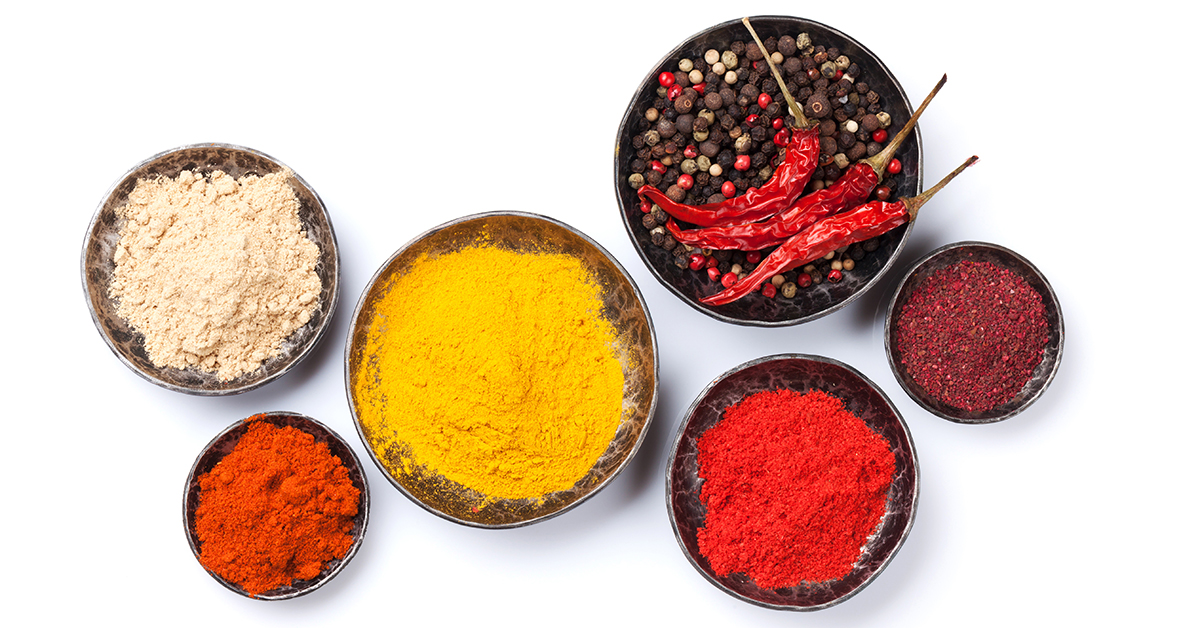
Decontamination of herbs and spices – process validation and challenge testing for both established and emerging technologies
14 May 2024 | Rob Limburn, Section Lead – Industrial Process Microbiology and Danny Bayliss, New Technology Lead.
Whether it’s spices, seasonings or ingredients in snacks or for use in product formulations, when a food is in a powdered form it can harbour pathogens if not treated properly. To address this, a decontamination process is required to kill any pathogens present, and this process must be validated.
By helping you validate your process for the removal of pathogens from herbs and spices, we can enable you to ensure compliance to the relevant standards and best practices, ensure safe processes, and ultimately guarantee safe products for your customers and consumers.
Here we explore the challenge presented by herbs and spices, both in their propensity to support the survival of pathogens and in the adverse impact that some decontamination technologies can have on the quality of these products. Emerging processing technologies offer some promising solutions – this blog covers the process validation of both established and emerging technologies.
The challenges presented by herbs and spices
Dry herbs and spices present a potential pathogen risk, as microorganisms in low water activity environments (such as dried food products) can survive for extended periods of time. Salmonella is most resistant to desiccation and most frequently associated with foodborne outbreaks and recalls, but E.coli and Listeria can also survive in these products.
Pasteurisation or sterilisation of food powders using established and emerging technologies can provide solutions to safeguard consumers and manufacturers.
Established and emerging technologies for powder decontamination
Typical, established methods for pasteurising or sterilising powders such as herbs and spices involve the use of steam / autoclave systems.
One of the key challenges in using traditional decontamination technologies for food powders is the adverse impact on a product’s organoleptic properties and its nutritional and functional characteristics.

Infrared, radio frequency, microwave pasteurisation, irradiation, UV-C light and pulsed UV light all offer alternative means of powder decontamination – killing pathogens whilst minimising the impact on the product’s properties / characteristics.
The importance of validation – no matter the process used
Process validation is an important method of demonstrating that the process meets the critical parameters required to control the production of safe food.
For example, monitoring temperatures of batch-processed, heat-preserved products to give confidence that the process meets known inactivation kinetic requirements for specific microorganisms.
When the process does not allow for the use of temperature sensors, or there is a lack of available data (such as with new and emerging processing technologies), microbiological challenge tests are needed to validate the process.
Challenge testing is used to demonstrate the log reduction (reduction in the level of the target microorganism present) achieved by processing equipment and cleaning regimes. It involves the inoculation of a product or an environment and the subsequent study of microbial inactivation (to demonstrate the impact of conditions that the product has been exposed to).
How our team can help
For established technologies and new / emerging technologies, we can validate both thermal and non-thermal processes. Plus, we have the expertise and resources to undertake off-site and on-site validation of processes.
As experts in process validation and challenge testing, we understand the key considerations and can provide a thorough, bespoke proposal, undertaking challenge testing with a conscientious regard to all relevant factors. We consider the nuances of processing food and the factors that may influence challenge testing, such as the variability involved in the vast array of different processes, regimes and products. With this in mind, we can advise on and undertake industry standard challenge testing (in accordance with current best practice) or enhanced testing for situations where there are higher degrees of variability.
When we undertake on-site validation, we also factor in the way challenge test samples are stored and transported, ensuring that samples stay in ‘stasis’ and the microbes within them do not grow or die off. We also include ‘transport controls’ which are inoculated samples taken to the site of a challenge test, stored in the same way as the challenge test samples (but not exposed to the process or regime) and analysed to demonstrate that transportation has not influenced the challenge test samples. This way we ensure that the lethality measured during validation is not biased by the way in which the samples have been handled.

About Rob Limburn
Rob has worked in Microbiology here within both Methods Research and Industrial Process Microbiology. He has been working in the food industry since 2004 and also has experience in allergens testing and authenticity testing.
Process validation and challenge testing – how can we help?
For more information or to secure support in validating your process, get in touch.
Ensure the safety of your herbs and spices
Find out more about how we can help you to ensure the safety of herbs and spices.







